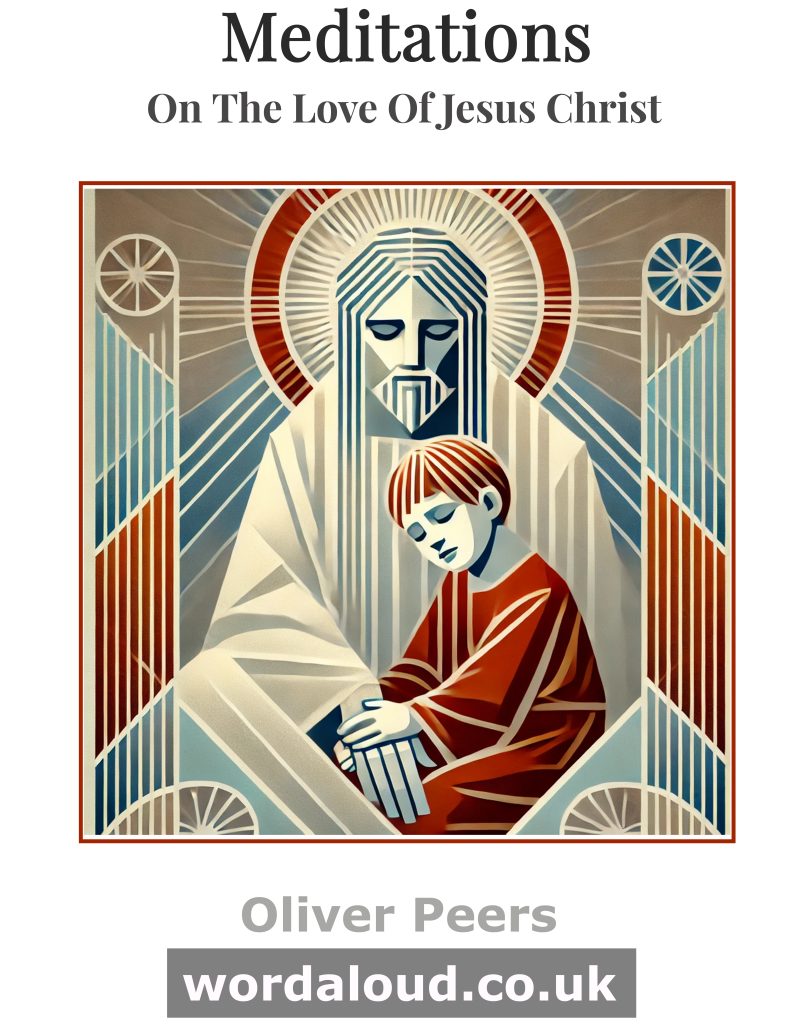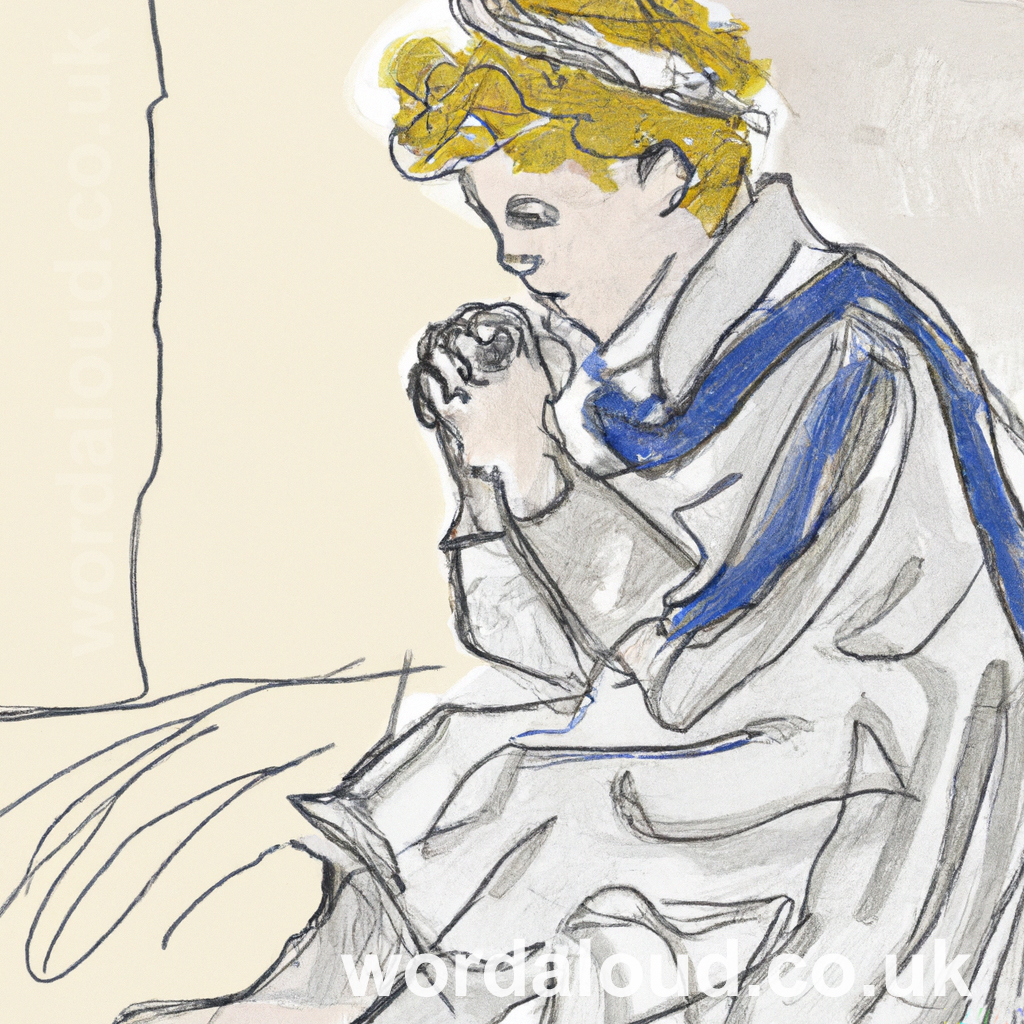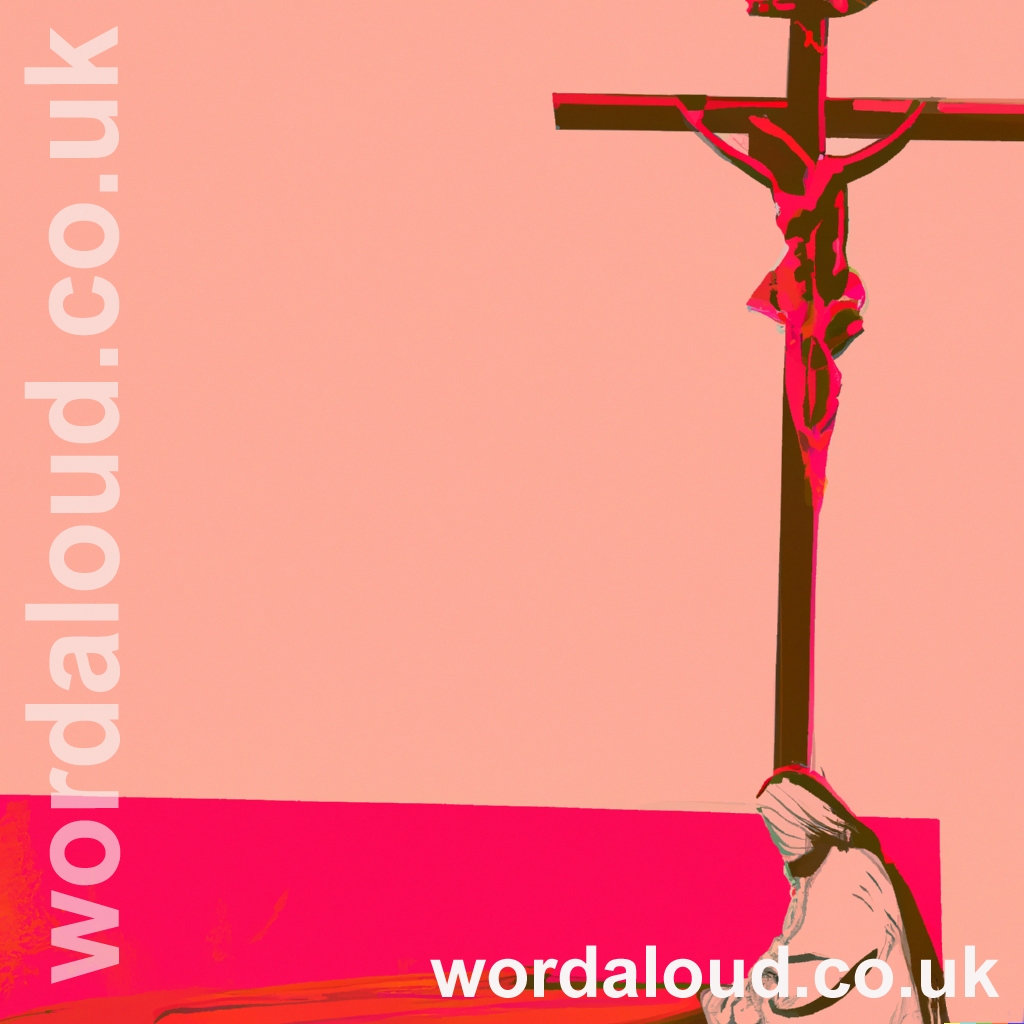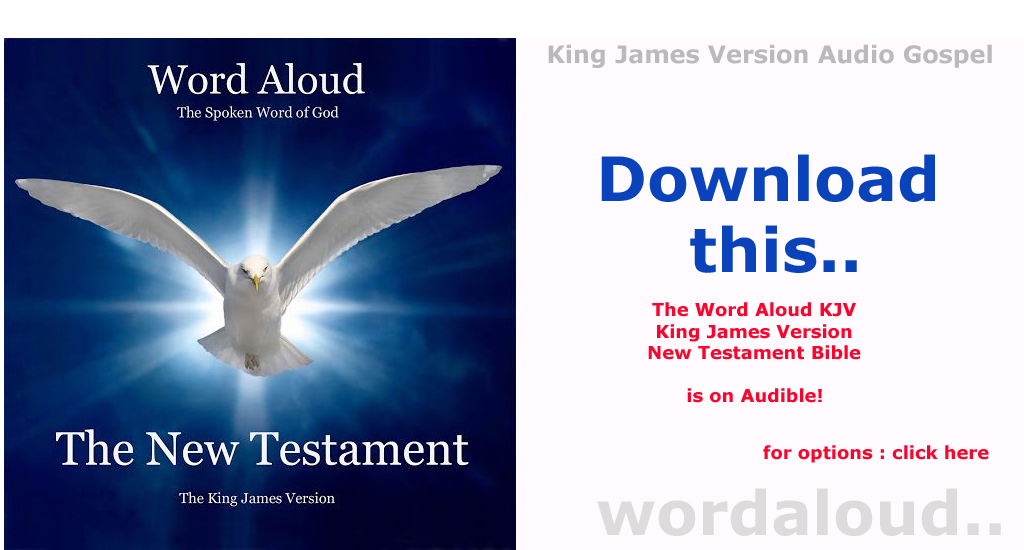Christian Art | A Boy At Prayer Receives Communion | Eucharist | Jesus Saves
Office Of Readings | Easter Saturday | A Reading From The Instructions To The Newly Baptized At Jerusalem | The Bread of Heaven and the Cup of Salvation
‘The bread of heaven and the cup of salvation.’
Commentary on the Jerusalem Catechesis | The Instructions To The Newly Baptized At Jerusalem
The Bread of Heaven and the Cup of Salvation
The reading from the Jerusalem Catecheses offers a luminous and powerful reflection on the mystery of the Eucharist, the sacrament at the very heart of Christian life. Attributed traditionally to Saint Cyril of Jerusalem, these catecheses were designed to unfold the hidden mysteries of the faith to those who had newly received baptism and first communion at the Easter Vigil. The context is important: these were not casual theological musings, but careful, pastoral teachings meant to anchor the newly-initiated in the life-giving truths they had just entered into.
The heart of this passage is the unwavering assertion of the Real Presence of Christ in the Eucharist. Cyril does not argue cautiously; he proclaims boldly: ‘Since Christ himself has declared the bread to be his body, who can have any further doubt?’ In an era where some were tempted to interpret Christ’s words metaphorically, Cyril insists on a straightforward, literal faith. Christ’s own words — ‘This is my body… this is my blood’ — are treated as sufficient warrant for full-hearted belief. There is no room for skepticism: to doubt the Eucharist is, by implication, to doubt Christ himself.
This teaching reflects a deep continuity with the apostolic faith. Already in the New Testament, St. Paul affirms, ‘The bread that we break, is it not a participation in the body of Christ?’ (1 Corinthians 10:16) The Eucharist is not a mere symbol among symbols, but a sacramental participation in the living Christ. Saint Cyril continues this tradition, reinforcing that the Eucharistic elements, though appearing to human senses as bread and wine, are indeed the body and blood of the Lord. This appeals directly to the primacy of faith over sight, recalling Paul’s teaching that Christians ‘walk by faith, not by sight’ (2 Corinthians 5:7).
Moreover, the catechesis emphasizes the transformative power of the Eucharist. In receiving Christ’s body and blood, the believer is made a ‘bearer of Christ’ — a Christophoros. Here, the early Church’s mystical understanding of the sacraments is beautifully clear: to receive the Eucharist is not only to commemorate Christ, but to be conformed to him, to be transfigured into his likeness. Saint Peter’s phrase that Christians are made ‘partakers of the divine nature’ (2 Peter 1:4) finds vivid application here: the Eucharist draws us into the very life of God.
Cyril is also careful to explain how the Old Testament prefigurations — the showbread in the Temple, the manna in the desert — point to the fullness of the Eucharist. The showbread, which had meaning under the old covenant, gave way before the true ‘bread from heaven’ that Christ provides (John 6:32-35). This biblical typology strengthens the catechesis, showing that the Eucharist was not a novelty, but the culmination of God’s long preparation of his people. What was hinted at in figures has now been given in fullness.
The dual effect of the Eucharist — sanctifying both body and soul — is also beautifully emphasized. The bread sanctifies the body; the Word sanctifies the soul. This integrated vision of human nature, so typical of patristic thought, avoids any dualism that would prize the soul over the body. Salvation in Christ is for the whole person. The Eucharist thus nourishes human beings at every level, preparing them not just for a spiritual existence, but for the resurrection of the body and life everlasting.
The passage ends with a tender exhortation to interior purity. Echoing Paul’s words that Christians should examine themselves before receiving the body and blood of the Lord (1 Corinthians 11:28), Cyril urges his hearers to cleanse their consciences. Only with a pure heart can the Christian ‘be transformed from glory to glory’ — an allusion to 2 Corinthians 3:18 — contemplating the Lord’s glory and being conformed more and more to his image.
This Holy Saturday reading, poised on the edge of the Easter Vigil, is profoundly fitting. The catechumen, freshly baptized and anointed, stands ready to partake of the Eucharist for the first time. The reading calls him or her — and by extension, all of us — to approach the altar with wonder, reverence, and firm faith, recognizing that in the humble forms of bread and wine is contained the infinite love and life of God.
As the Church sings at every Mass: ‘Lord, I am not worthy that you should enter under my roof, but only say the word and my soul shall be healed.’ In the Eucharist, the word has been spoken; the healing has been given; the divine life has been offered.
To Christ Jesus, true bread from heaven, be all glory and praise, now and forever. Amen.

Living Memory | Pope Francis And The Eucharistic Mystery
The spirit of the Jerusalem Catecheses finds a vibrant echo in the teaching of Pope Francis, who often returns to the centrality of the Eucharist in Christian life. In his apostolic exhortation Evangelii Gaudium (2013), Francis calls the Eucharist ‘not a prize for the perfect but a powerful medicine and nourishment for the weak’ (§47). This insight harmonizes deeply with the tone of the early Church’s catechesis: the Eucharist is offered not as a reward for the righteous but as the necessary food for pilgrims on the journey of faith — those who, like the neophytes of Jerusalem, are continually being transformed by grace.
Moreover, Pope Francis stresses that the Eucharist is an encounter with Christ that transforms the believer into a living member of his Body. In a 2018 homily on the Feast of Corpus Christi, he spoke these striking words:
‘The Eucharist is simple food, like bread, yet it is the only food that satisfies, because there is no greater love than this: to give one’s life for one’s friends.’
This emphasis on transformation through love resonates with the Catecheses’ insistence that, by receiving Christ’s body and blood, we become ‘bearers of Christ’ and sharers in his divine nature. The Eucharist is not magic; it is communion, it is conversion, it is participation.
Pope Francis also repeatedly urges that the reality of the Eucharist must spill over into our daily lives. In his 2021 Corpus Christi homily, he said:
‘The Lord comes to our streets in order to rekindle hope and restore dignity, for there is great need of it.’
Receiving the body and blood of Christ demands that we become Eucharistic persons: people who are broken and given for others, who nourish the world with the same love that they themselves have received. Cyril’s emphasis on the Eucharist sanctifying both soul and body naturally leads to this modern call: the whole of our existence must become Eucharistic — given, poured out, radiant with the presence of Christ.
Thus, the Jerusalem Catecheses and the voice of Pope Francis together remind us: the Eucharist is not merely an ancient rite or a theological concept. It is Christ alive and present, offering himself again and again as the true Bread from Heaven, calling us to be changed into what we receive — and to bring his living presence into the streets, into the margins, into all the places that still hunger for hope.
A Reading From The Instructions To The Newly Baptized At Jerusalem
On the night he was betrayed our Lord Jesus Christ took bread, and when he had given thanks, he broke it and gave it to his disciples and said: ‘Take, eat: this is my body.’ He took the cup, gave thanks and said: ‘Take, drink: this is my blood.’ Since Christ himself has declared the bread to be his body, who can have any further doubt? Since he himself has said quite categorically, This is my blood, who would dare to question it and say that it is not his blood?
Therefore, it is with complete assurance that we receive the bread and wine as the body and blood of Christ. His body is given to us under the symbol of bread, and his blood is given to us under the symbol of wine, in order to make us by receiving them one body and blood with him. Having his body and blood in our members, we become bearers of Christ and sharers, as Saint Peter says, in the divine nature.
Once, when speaking to the Jews, Christ said: Unless you eat my flesh and drink my blood you shall have no life in you. This horrified them and they left him. Not understanding his words in a spiritual way, they thought the Saviour wished them to practise cannibalism.
Under the old covenant there was showbread, but it came to an end with the old dispensation to which it belonged. Under the new covenant there is bread from heaven and the cup of salvation. These sanctify both soul and body, the bread being adapted to the sanctification of the body, the Word, to the sanctification of the soul.
Do not, then, regard the eucharistic elements as ordinary bread and wine: they are in fact the body and blood of the Lord, as he himself has declared. Whatever your senses may tell you, be strong in faith.
You have been taught and you are firmly convinced that what looks and tastes like bread and wine is not bread and wine but the body and the blood of Christ. You know also how David referred to this long ago when he sang: Bread gives strength to man’s heart and makes his face shine with the oil of gladness. Strengthen your heart, then, by receiving this bread as spiritual bread, and bring joy to the face of your soul.
May purity of conscience remove the veil from the face of your soul so that by contemplating the glory of the Lord, as in a mirror, you may be transformed from glory to glory in Christ Jesus our Lord. To him be glory for ever and ever. Amen.







